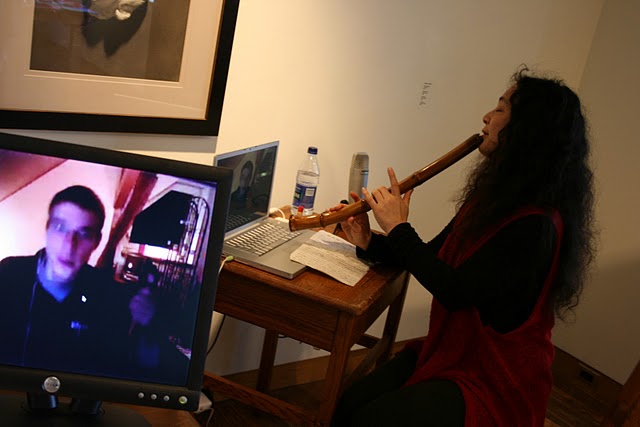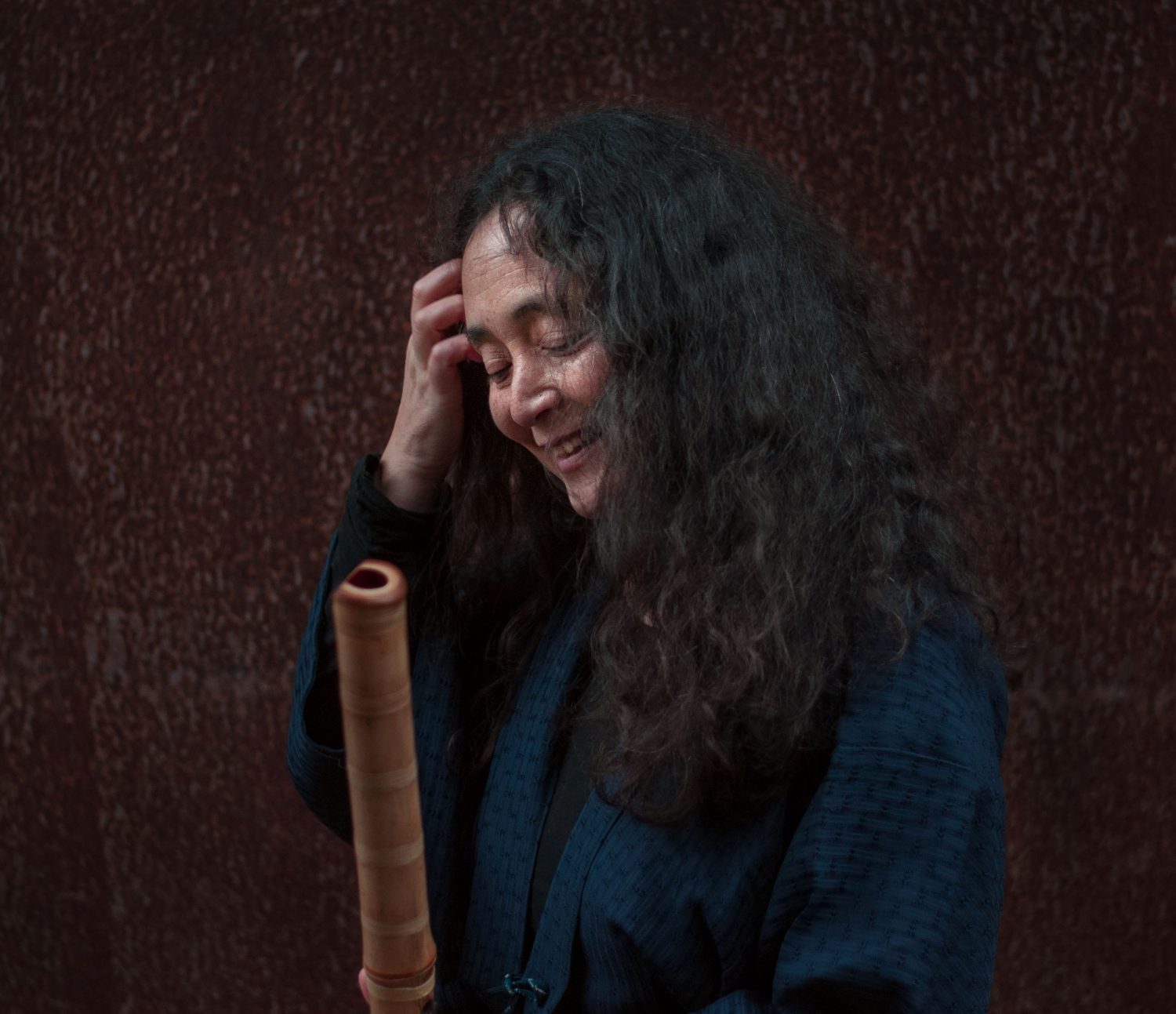Where I teach?
I teach shakuhachi the following places:
Denmark: Nørre Snede and Copenhagen
Germany: Hamburg
UK: London
WORLD: online using Skype/Facetime/Zoom etc.
Content of the lessons
I was taught koten honkyoku (the solo repertoire played by the komusō monks of the Fuke sect during the Edo period (1603-1867) from the very beginning by my teacher Okuda Atsuya. I was very happy about this as that was what I was interested in. Thus, I teach honkyoku from the beginning as well – unless the student want to do something else. But usually we do honkyoku because that is the music that has been played and developed through centuries on shakuhachi and it suits the instrument. I believe it gives you a very solid foundation of shakuhachi playing when studying honkyoku.
I mostly teach honkyoku in the Zensabo style – as I have learned from Okuda Atsuya. But I do also teach occationally different styles and conteporary music as well as improvisation.
When you begin I have some simple honkyoku from the Itchoken and Kyushu styles to begin with. Then we usually move on to Kyorei and enter other honkyoku pieces from there.
Pedagogy
In Japan, you will most of the time play alongside your teacher and learn the repertoire by following him or her. It is not the fastest method but it is a great method to learn the flow of the music and the feeling of it. I loved being taught this way. Okuda was not silent as I can understand some Japanese teachers have been. But he also preferred the playing along method. He would come with elaborate answers if asked. I certainly talk or teach more verbally – but the playing along method is also an experience of Japan. Thus this is also my preferred methodology.
On Skype you cannot play together, so here the predominant method of teaching is I play and the student play the same thereafter. We also speak quite a bit about the pieces, the flow and the meaning of the pieces – as I have understood it.

Repertoire
I teach Zensabō honkyoku, and my Zensabō repertoire is (in alphabetical order (thank you, Baldur Winther):
- Ajikan
- Azuma Jishi
- Banji
- Dai Otsu-gaeshi
- Daha
- Echigo san’ya
- Hifumi-chō
- Hifumichō & Hachigaeshi
- Honchōshi & Sagari-ha
- Honte no Shirabe
- Jyakunen
- Kaede
- Kokū
- Koro Sugagaki
- Kudari-ha
- Kumoijishi
- Kyorei (虚鈴)
- Kyorei (虚霊)
- Kyushu Reibo
- Matsukaze no Shirabe & Matsukaze
- Mukaiji
- Musashi Shirabe
- Murasaki Reibo
- Nerisaji
- Ōshū nagashi
- Ōshū Rinbo
- Ōshūsaji
- Reibo (Futaiken)
- Reibo (Shoganken)
- Rinmon
- San’ya
- San’ya Seiran
- Shika no Tone (Betsuden)
- Shin Kyorei
- Shin’ya
- Shingetsu
- Shingetsu-chō
- Shinsaji / Yamagoe
- Shinseki
- Sokkan
- Sō Shingetsu
- Suzuru (Koten)
- Takiochi
- Tamuke
- Toppiki
- Tōri-Katotsuke-Hachigaeshi
- Tsuru no Sugomori (kudan)
- Tsuru no Sugomori (Oshūden)
- Ukigumo
- Yamato Choshi
- Yamato Rinbo
- Yurisaji
Other honkyoku pieces:
- Oteki
- Ekō
You can find my contact details on the contact page if you want more information about shakuhachi lessons.
How it all began
When I began to live between Tokyo (when I was studying shakuhachi with Okuda) and Geneva, Dieter Nanz (later he received his shihan name Zuishō) persuaded me to teach him shakuhachi. I was very afraid of doing anything wrong as I had never even thought of teaching or performing shakuhachi. For me – playing shakuhachi was something very intensely personal and deeply felt emotions. However, I taught Dieter but never charged money for it. It didn’t yet feel right. Once I moved to London in 2000 I was very quickly contacted by people wanting to learn. By this time I was less afraid of teaching and I began really enjoying it. I am grateful to especially Lorne Edwards in London for being my student and inspiring me to teach. Today I love teaching and sharing the wonderful sounds, techniques and knowledge about shakuhachi.
Dieter Zuishō Nanz passed away much too early in 2015. I will be grateful for him the rest of my life for having been so insistent and thereby inspiring me to get into the path of sharing the shakuhachi.
